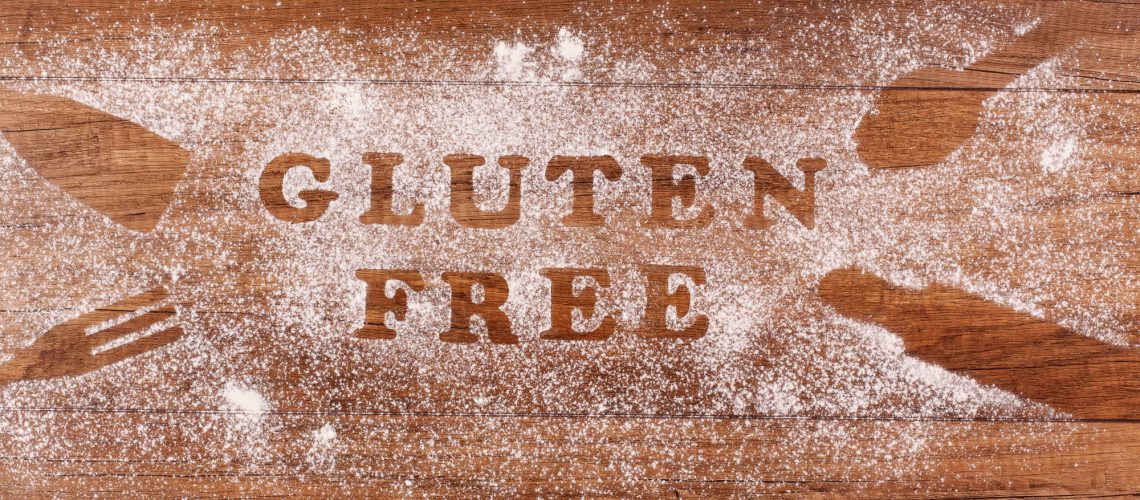
Finding out that you are gluten intolerant is like a love-hate relationship. One one side, you have an answer to why you have been feeling bloated all the time, yet on the other side, you realize that you can no longer eat your favorite foods!
According to research, approximately one in every ten people are gluten intolerant, which means that they are not celiac, yet they must switch to using gluten-free substitutes.
The only problem is, if you are gluten intolerant, it can be difficult to figure out how to implement gluten-free substitutes into your daily eating plan. Even worse, there are a lot of substitutes out there that taste like you’re eating cardboard. So how can you find the best gluten-free alternatives without suffering your tastebuds?
Thankfully, we created this article to teach you everything about how to find and use the best gluten-free substitutes, without dealing with bland cardboard-like flavors.
Keep on reading to learn how you can enjoy eating your favorite foods again, yet this time it will be gluten (and bloating) free!
What is Gluten?
Gluten is the general name for the proteins found in wheat, rye, and barley products. Because of genetic modification for mass production, wheat is no longer the same molecular structure as it used to be. This change in the wheat’s DNA is what is responsible for millions of people now discovering they have gluten-intolerance.
According to the National Institute of Diabetes and Digestive and Kidney Diseases, approximately 1 in every 141 people suffer from celiac disease. Unfortunately, those numbers keep on growing due to the modification of wheat.
Where to Find Sneaky Gluten Products
It is quite obvious that eating regular bread is a big no-no on a gluten-free diet, yet what about the other products? Ideally, you want to stay away from any product that does not have “gluten-free” on the label. However, if you are not celiac, there are some products that you can still have without that trusted label.
To receive the “gluten-free” stamp of approval, a company has to pay thousands of dollars to have their kitchen inspected and go through rigorous testing. This can be too much of a hassle, even if their product has no gluten ingredients.
The best thing to look out for is anything containing:
- Wheat
- Rye
- Barley
- Caramel color
- Artificial flavor
- Barley extract
- Malt vinegar
Certain unsuspecting products that contain gluten are:
- Some brands of potato chips
- Soya sauce
- Salad dressing
- Marinades
- Medications
- Meat substitutes
- Vegan products
- Alcohol, including beer
- Eggs in some restaurants
- Licorice
- Ice Creams
- Energy bars
- Soup and broths
- Gravy
- Anything thickened
- Seasonings and spice mixes
Make sure you thoroughly inspect the label for any sneaky gluten, and if still worried, opt for the certified gluten-free version.
The Best Gluten-Free Substitutes
We now live in a gluten-free world, where nearly every restaurant has gluten-free substitutes. There are even specialty bakeries that focus on only gluten-free baking!
Follow this guide for using the best gluten-free substitutes:
Corn Tortillas
While they may be smaller than a large wheat tortilla, corn tortillas are packed full of authentic Mexican flavor. Use them to turn any meal into a taco, or bake the tortillas and add pizza toppings to make a thin-crust mini pizza! If you want a bigger sized tortilla, many health food stores carry large rice flour tortillas as well.
Nuts and Seeds
If you are craving a nice encrusted fish meal, or even a pie with a nice crust, you can opt for using nuts and seeds instead. Simply use a food processor to grind up almonds, pecans, walnuts, and coconut flakes and mix it with some egg wash as a nice crust.
We have a delicious pepper-encrusted salmon on our menu, that is completely gluten-free! Check out our menu for more options.
Gluten-Free Flours
Choices are abundant when searching for a good gluten-free flour for your baking needs. It depends on what you are choosing to bake. Many companies such as Bob’s Red Mill or Cloud 9 have excellent 1:1 flour mixes that you can use to easily replace regular flour in any baking recipe!
If you want to make a flour yourself, these are some of the best flour options:
- Rice flour (white or brown)
- Quinoa flour
- Tapioca starch
- Almond flour
- Potato starch
- Sorghum flour
- Buckwheat flour
- Cassava flour
- Amaranth flour
- Oat flour (gluten-free certified)
- Chickpea
- Banana flour
Play around and mix some of the flours to find a mix that you enjoy. Coconut flour is another great alternative, however, we decided not to add it to the list for baking as it can be dense.
Try using these flours to make bread, muffins, cookies, brownies, banana bread, scones, buns, pastries, and more! The only issue you will run into with gluten-free baking is when you are making pastries. Without gluten, pastries do not have that desirable flakey crust.
Gluten-Free Noodles
Perhaps one of the worst parts about going gluten-free is not being able to eat noodles anymore. This doesn’t have to be the case with all the wonderful gluten-free noodle options available. Instead of white or whole wheat noodles, opt for any gluten-free alternative such as:
- Rice noodles
- Quinoa flour noodles
- Buckwheat noodles
- Chickpea flour noodles
- Lentil flour noodles
Many common name-brands now offer great gluten-free spaghetti alternatives such as Barilla pasta. Most major supermarkets even now have a gluten-free section with all the delicious, and safe, options for you to test out and enjoy.
Learn About More Gluten-Free Substitutes
There are limitless options for gluten-free substitutes, you just have to expand your mind and get creative! When first starting as gluten-free, try to look at the benefits for your health, rather than focusing on the foods you will no longer be able to eat.
If you want a jump-start on a great gluten-free eating plan, we have a great meal delivery service to help you get on track. Check out our order service to get started today!

